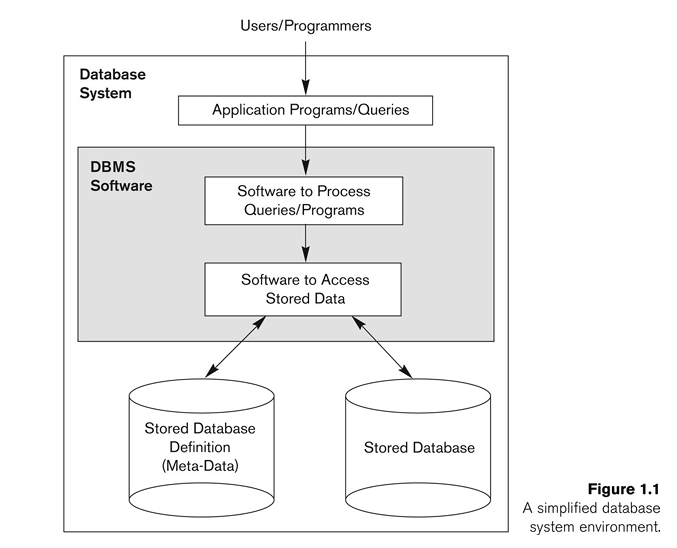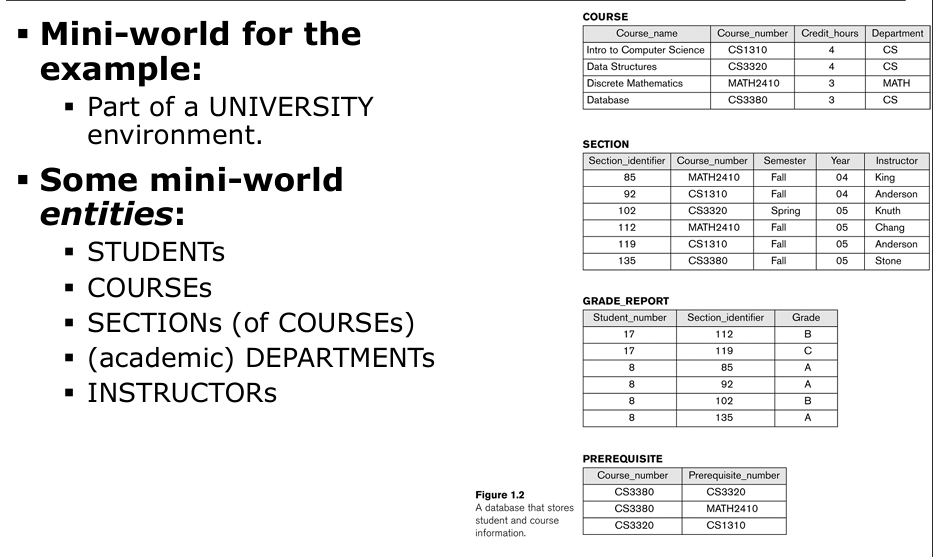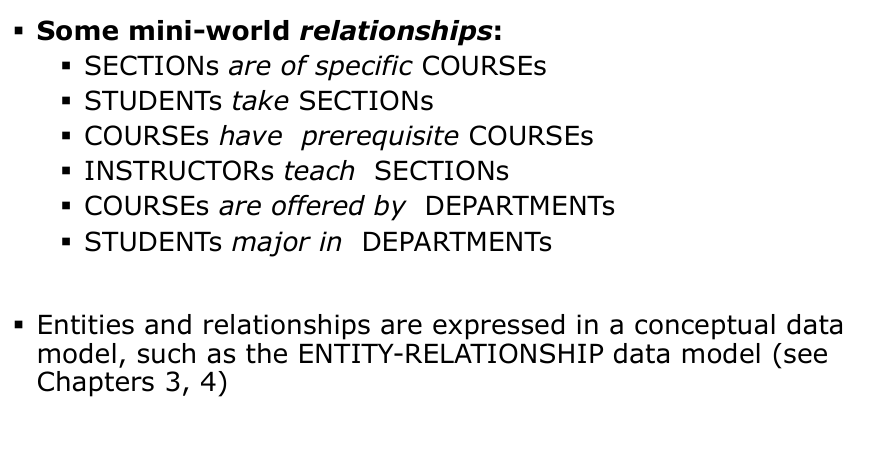Databases and database users
1/26
Earn XP
Description and Tags
lecture 1
Name | Mastery | Learn | Test | Matching | Spaced |
|---|
No study sessions yet.
27 Terms
An information systems (IS) is a?
formal, sociotechnical, organizational system designed to collect, process, store, and distribute information
From a sociotechnical perspective, information systems are composed by
four components: task, people, structure (or roles), and technology
Information systems can be defined as
an integration of components for collection, storage and processing of data of which the data is used to provide information, contribute to knowledge as well as digital products that facilitate decision making
A computer information systemis a system that is
composed of people and computers that processes or interprets information. The term is also sometimes used to simply refer to a computer system with software installed
"Information systems" is also an academic field study
about systems with a specific reference to information and the complementary networks of computer hardware and software that people and organizations use to collect, filter, process, create and also distribute data.
Types of Databases and Database Applications
Traditional Applications: Numeric and Textual Databases More Recent Applications: Multimedia Databases Geographic Information Systems (GIS) Biological and Genome Databases Data Warehouses Mobile databases Real-time and Active Databases Big data storage systems, data from social media, search engines with dedicated storage, cloud-based systems and data centres … We will focus on traditional applications
Data:
Known facts that can be recorded and have an implicit meaning.
Mini-world or Universe of Discourse (UoD):
Some part of the real world about which data is stored in a database. For example, student grades and transcripts at a university.
Database
A collection of related data
Database Management System (DBMS):
A software package/system to facilitate the creation and maintenance of a computerized database.
Database System:
The DBMS software together with the data itself. Sometimes, the applications are also included.
Simplified Database System Environment

Typical DBMS Functionality
Definea particular database
Constructor Load the initial database contents on a storage medium controlled by the DBMS
Manipulatingthe database: Retrieval: Querying, generating reports Modification: Insertions, deletions and updates to its content Accessingthe database through Web applications
Processingand Sharing:By a set of concurrent users and application programs data is kept valid and consistent
Application Activities Against a Database
Applications interact with a database via-Queries- Transactions: read, update, generate new data as units of work Applications must not allow unauthorized users to access data Applications must keep up with changing user requirements against the database
Additional DBMS Functionality
DBMS may additionally provide: Protection or Security measures to prevent unauthorized access “Active” processing to take internal actions on data Presentation and Visualization of data Maintenance of the database and associated programs
Example of a Database (with a Conceptual Data Model)

Example of a Database (2) (with a Conceptual Data Model)

first Main Characteristics of the Database Approach
1. Self-describing nature of a database system: A DBMS catalogstores the description/meta-dataof a particular database (e.g. data structures, types, and constraints) Thus DBMS software can be used by different database applications.
second Main Characteristics of the Database Approach
2. Insulation/separation between programs and data: program-data independence. changing data structures and storage organization independent of change in the user programs.
third Main Characteristics of the Database Approach
data Abstraction: Using a data model hides storage details (i.e. no details about the storage medium and its functions) presents the users/programmers with a conceptual view of the database (and abstracts from the physical view)
fourth Main Characteristics of the Database Approach
4.Support of multiple views of the data: Each user may see a different view of the database, which describes onlythe data of interest to that user
fifth Main Characteristics of the Database Approach
5.Sharing of data and multi-user transaction processing is made possible: concurrent userscan retrieve from and update the database. Concurrency controlguarantees correct execution of each transaction Recoverysubsystem ensures each completed transaction has its effect permanently recorded in the database
Database Users
Two types 1.use and control the database content, design, develop and maintain database applications 2. design and develop the DBMS software and related tools, and the computer systems operators
Database Users –Actors on the Scene
Database administrators: authorizing access to the database, coordinating and monitoring its use and efficiency, acquiring software and hardware resources Database Designers: define the content, the structure, the constraints, and functions or transactions against the database. End-users: queries, reports and update of the database content.
Advantages of Using the Database Approach
Representing complex relationships among data. Enforcing integrity constraints on the database. Providing backup and recovery services. Providing optimization of queries for efficient processing. Providing multiple interfaces to different classes of users. Drawing inferences and actions from the stored data using deductive and active rules and triggers
When not to use a DBMS
Main inhibitors (costs) of using a DBMS: High initial investment need for additional hardware. Overhead for providing generality, security, concurrency control, recovery, and integrity functions. When a DBMS may be unnecessary: Simple applications, not expected to change. If access to data by multiple users is not required. When a DBMS may be infeasible: In embedded systems
When not to use a DBMS (2)
When no (traditional)DBMS may suffice: In real-time systems e.g., telephone switching systems High complexity of data because of modeling limitations e.g., in complex genome and protein databases If the database users need special operations not supported by the DBMS e.g., GIS and location based services